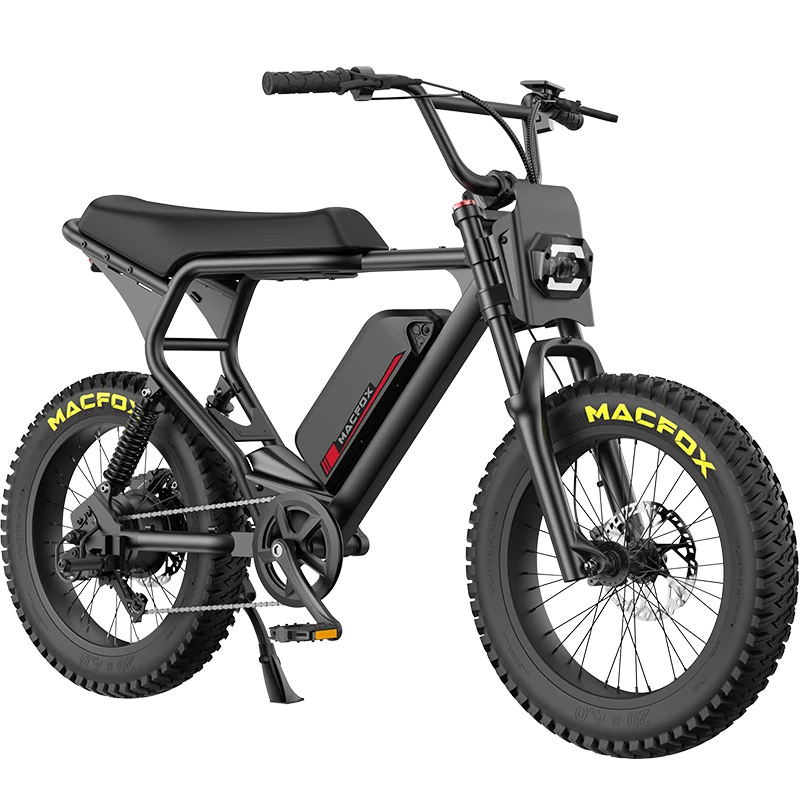If you're contemplating the idea of cruising through Connecticut's scenic routes on an electric bike, it's imperative to be well-versed in the Connecticut electric bike laws. These laws, which cover everything from speed limitations to age criteria, are designed to create a safe and enjoyable environment for e-bike enthusiasts. This exhaustive guide aims to provide you with all the essential information, ensuring you're not just compliant with the law but also confident and informed while riding.
Understanding the Classification of Electric Bikes in Connecticut
In the state of Connecticut, electric bikes are categorized into three specific classes, each with its own set of rules and regulations:
Three-Class System
-
Class 1: Pedal-assist only, with motor assistance up to 20 mph.
-
Class 2: Throttle-assisted, with motor assistance up to 20 mph.
-
Class 3: Pedal-assist only, with motor assistance up to 28 mph.
Motor & Power Limits
All classes must keep motors at ≤ 750 W and disengage when the top assisted speed is reached.
Understanding these classifications is not just a legal requirement but also a practical necessity for both riders and local enforcement agencies to manage and regulate e-bike usage effectively.

Licensing, Registration & Insurance
Electric bikes are treated as bicycles, not motor-driven cycles, so riders do not need a driver’s license, registration, plates, or insurance.
Age Restrictions and Helmet Laws
Connecticut has specific age-related laws concerning electric bikes. The state mandates that children under the age of 16 are not permitted to operate Class 3 electric bikes. They can, however, be passengers on these bikes when ridden by an adult. Additionally, Connecticut law requires helmets to be worn by riders of all age groups, irrespective of the class of electric bike they are operating. This is a crucial safety measure aimed at minimizing risks.
| Rule | Requirement | Statute |
| Minimum age to operate Class 3 | 16 yrs | § 14-289k(e) |
| Helmet on any e-bike (all classes, any age) | Mandatory | § 14-289k(f) |
| Safety advocates’ recap | Helmets required statewide |
Tip: Macfox includes a CPSC-certified lid with every X-series bike.
Where Can You Ride E-Bikes in Connecticut?
When it comes to the permissible locations for riding e-bikes in Connecticut, the rules can vary based on the type of terrain:
- Roads: Electric bikes are generally permitted on most public roads and are expected to adhere to the same traffic regulations as traditional bicycles.
- Trails: Class 3 electric bikes are explicitly prohibited from being ridden on bicycle trails, paths, or multi-use trails. However, Class 1 electric bikes are usually permitted on multi-use trails, offering more flexibility for nature enthusiasts.
- Sidewalks: The use of electric bikes on sidewalks is generally not allowed, unless specific local traffic signs indicate otherwise.
Speed and Power Limits
-
Verify motor ≤ 750 W and factory label present.
-
Check that Class 3 bikes have no throttle.
-
Confirm speedometer is installed on Class 3.
-
Wear an ANSI / CPSC helmet—no exceptions.
-
Stay off natural-surface trails on any class unless local rules permit.
In Connecticut, the motor power of an electric bike should not exceed 750W. Additionally, the maximum speed limit is set at 28 mph for Class 3 electric bikes, while for Class 1 and Class 2 bikes, the speed limit is capped at 20 mph. Understanding these speed and power limitations is essential for both safety and legal compliance.The Macfox X2 off road ebike meets all Connecticut requirements, with a 750W (peak 1000W) Geared Hub Motor.
Where You Can Ride
Roads & Bike Lanes
All classes may use public roads and striped bike lanes; when slower than traffic, keep right or use the shoulder.
Multi-Use & Natural-Surface Trails
-
Class 1 & 2 – Allowed on paved multi-use paths unless a local ordinance says otherwise; banned from natural-surface (dirt) paths.
-
Class 3 – Banned from any bike or multi-use path not adjacent to a roadway.
Sidewalks & Limited-Access Highways
All e-bikes are barred from sidewalks and limited-access highways.
Equipment & Labeling Rules
| Requirement | Details | Source |
| Lights & Reflectors | Front white light ≥ 500 ft, rear red reflector ≥ 600 ft, side reflection or lamps ≥ 500 ft | § 14-288 |
| Manufacturer label | Class, max speed, motor wattage | § 14-289l |
| Speedometer | Required on all Class 3 models | § 14-289l |
| 2025 update | HB 6862 makes mislabeling or “hot-rodding” an e-bike an unfair trade practice |
Safety Measures and Required Equipment
Connecticut law mandates that all electric bikes must be equipped with specific safety features. These include a white light lamp visible from at least 500 feet in the front and a red reflector visible from 600 feet in the rear. Additional reflective material or a lighted lamp visible from both sides is also required, especially for night-time riding, to ensure the safety of the rider as well as others on the road.
Local Regulations and Frequent Changes
Local laws and regulations concerning electric bikes can often differ from state laws, and these local rules can also be subject to frequent changes. Therefore, it's crucial to consult with local land management agencies or local government websites to stay updated on the most current regulations affecting e-bike usage in specific areas.
Financial Incentives
Connecticut offers an e-bike voucher program to encourage adoption:
-
Standard Voucher: $500 for eligible residents.
-
Voucher+: Additional $750 (total $1,250) for qualifying residents.
The program aims to make e-bikes more accessible and promote eco-friendly transportation.

Conclusion
For anyone planning to ride a Macfox ebike in the state, being fully familiar with Connecticut e-bike laws is not only a legal obligation, but a practical necessity. From understanding the different classifications and legal requirements, to understanding age restrictions and where riding is allowed, being well-informed will keep your e-bike experience safe and enjoyable. For more information, you can visit the Connecticut State Government website or consult other resources such as the Connecticut Interactive Bike Map and the RSA Guide for Pedestrians and Cyclists.
The article was last updated on December 8, 2025.
FAQs
Q1: Are electric bikes street legal in Connecticut?
Yes, electric bikes are street legal in Connecticut as long as they meet the state's specific classification and equipment requirements.
Q2: Do I need a license or registration?
No license, registration, or insurance is required.
Q3: Can I ride on sidewalks?
No. Sidewalk riding is prohibited statewide.
We recommend for you:
- Electric Bicycles and City Life Transforming Urban Mobility
- How to Maintain your Off Road Ebike Essential Tips and Tricks
- Choosing Your Perfect Off Road Ebike A Comprehensive Buying Guide
- DIY Maintenance Tips for Your Affordable Electric Bike
- Riding the Future A Cross-country Journey on a Long Range Electric Bike


















